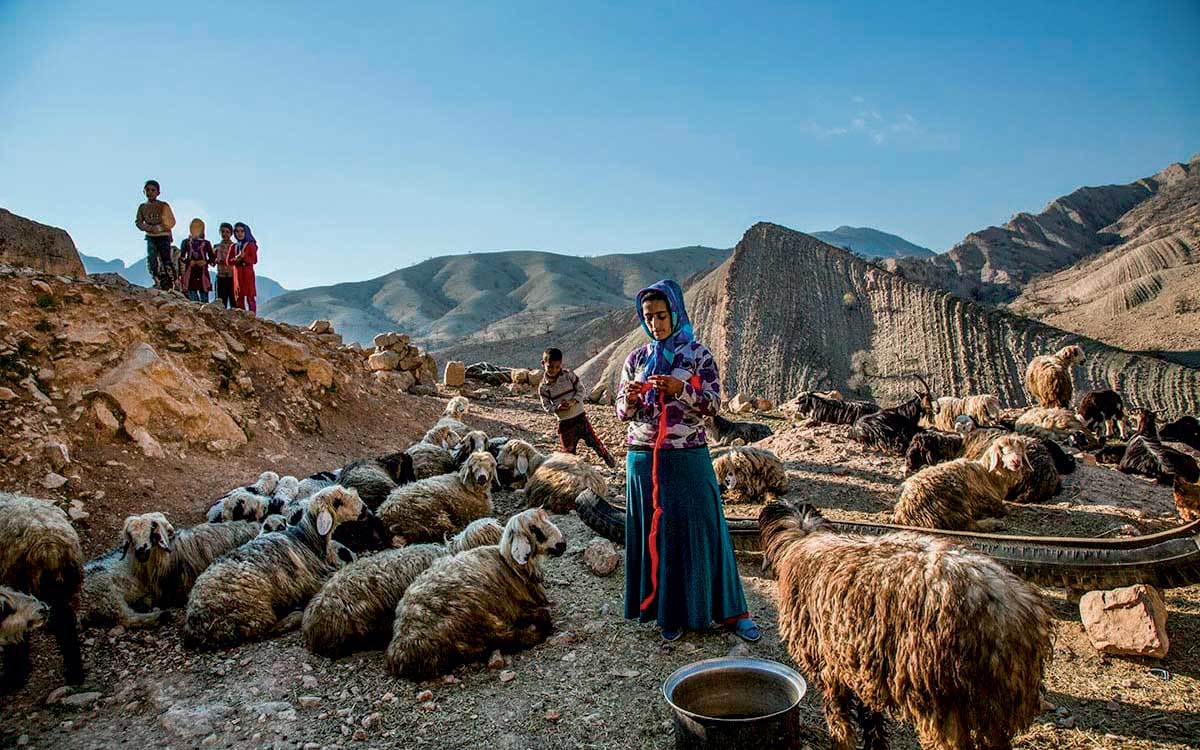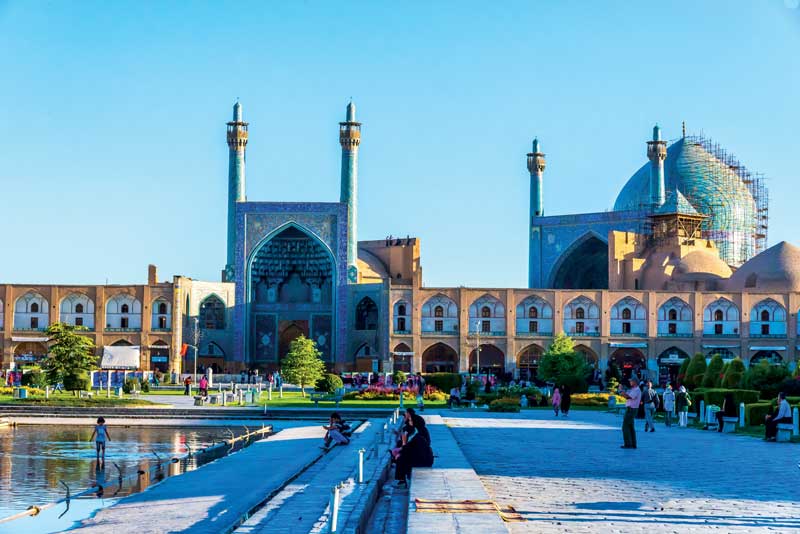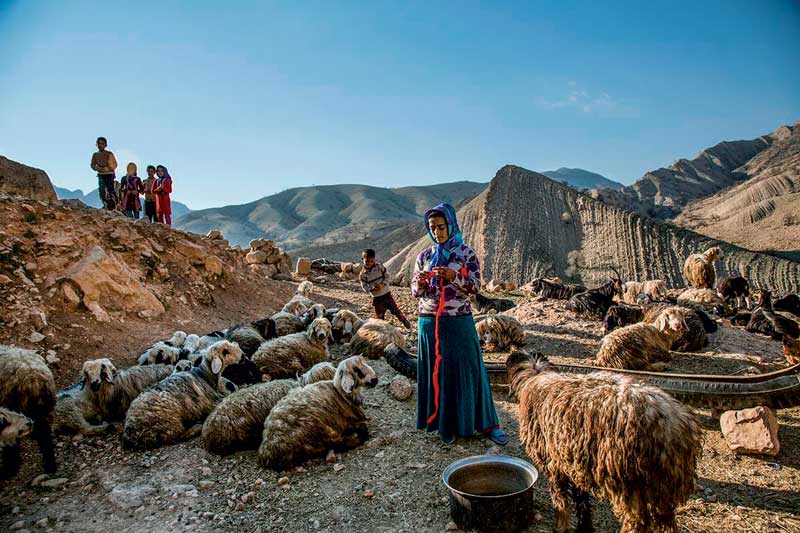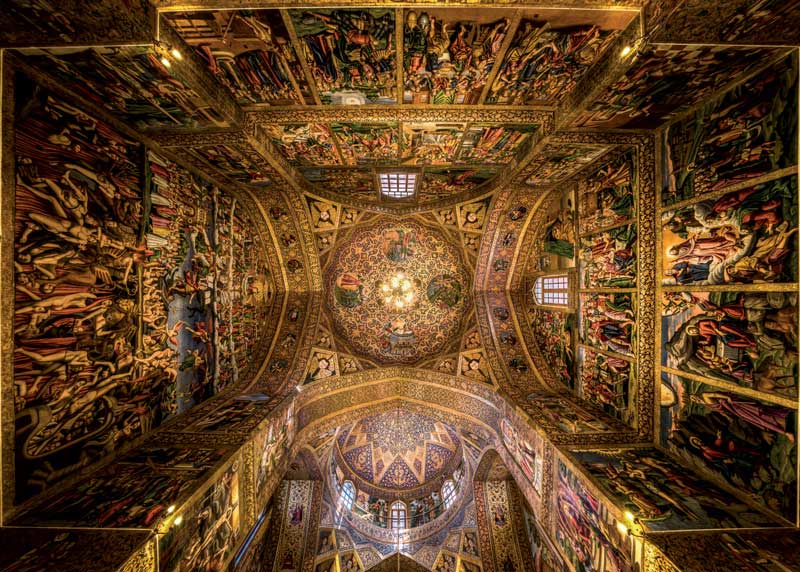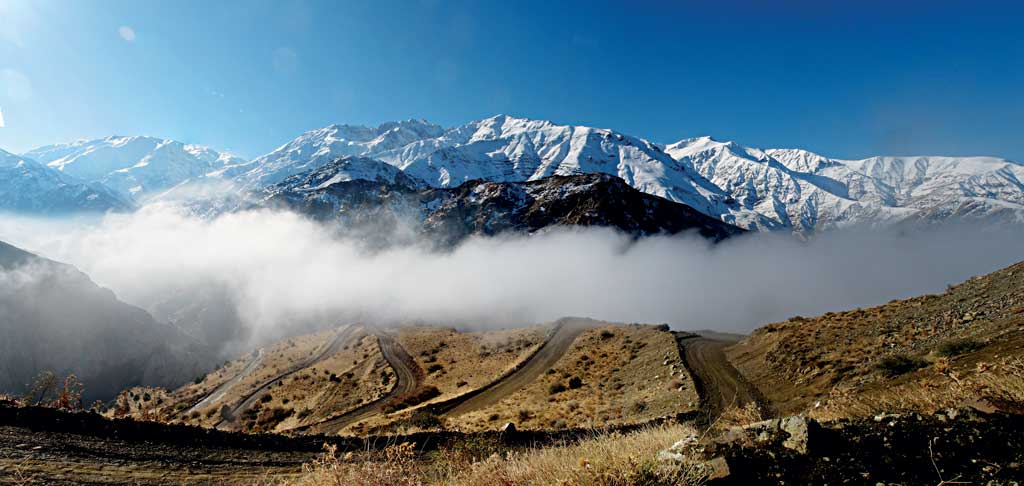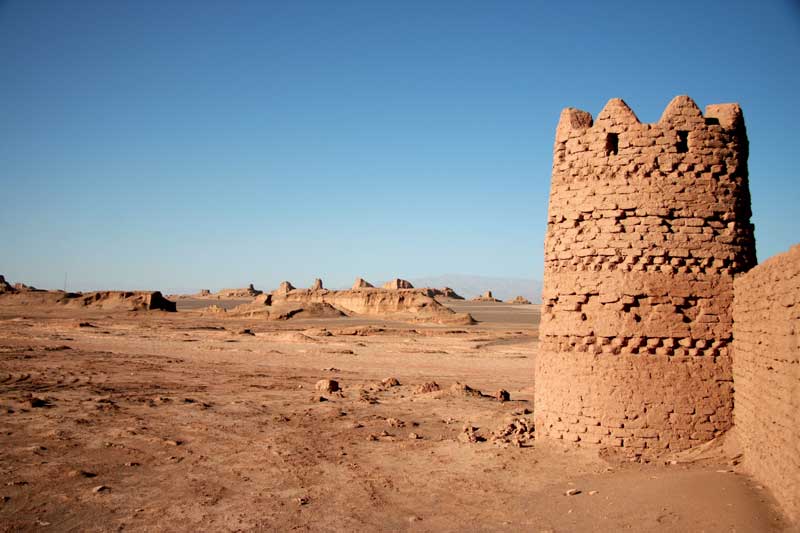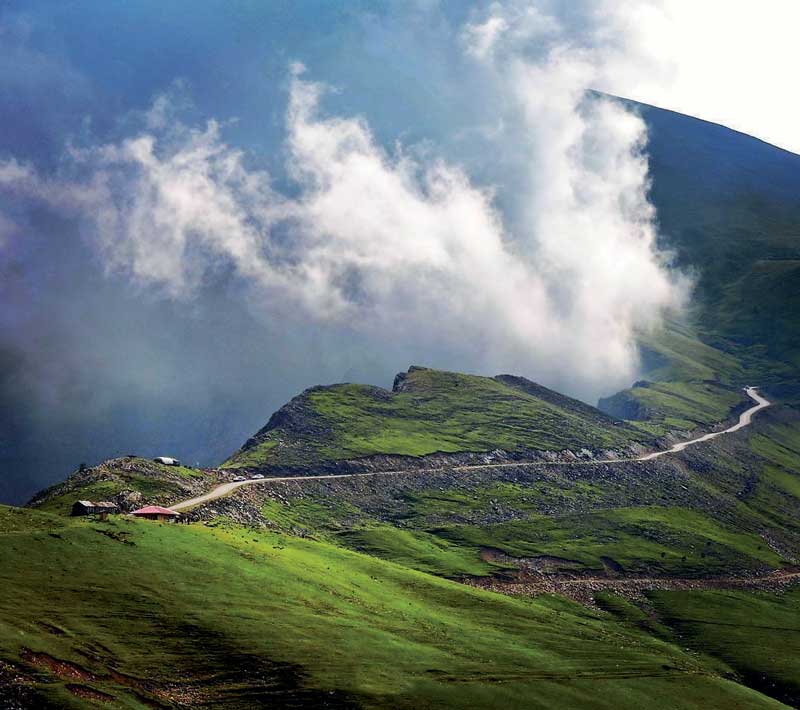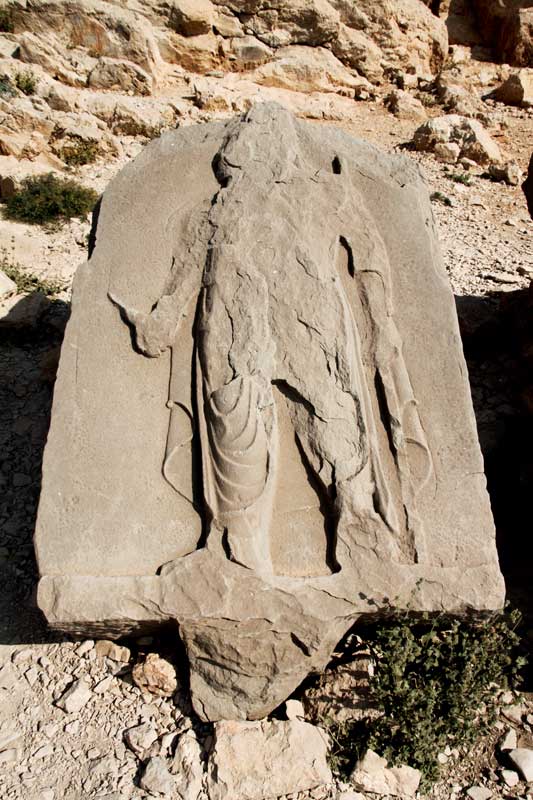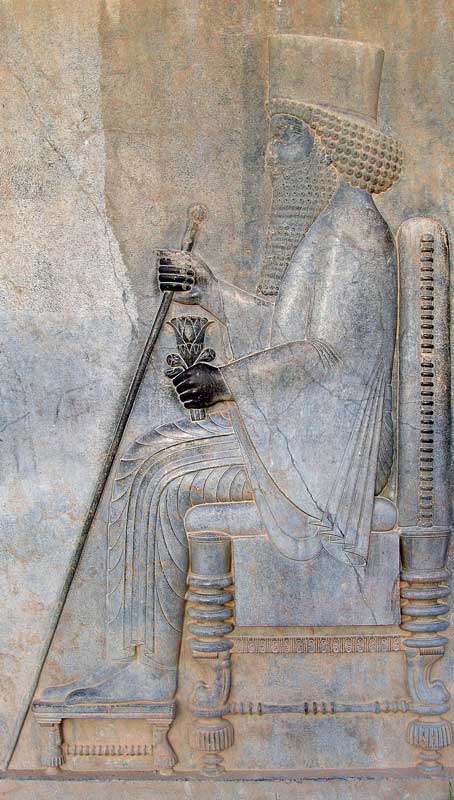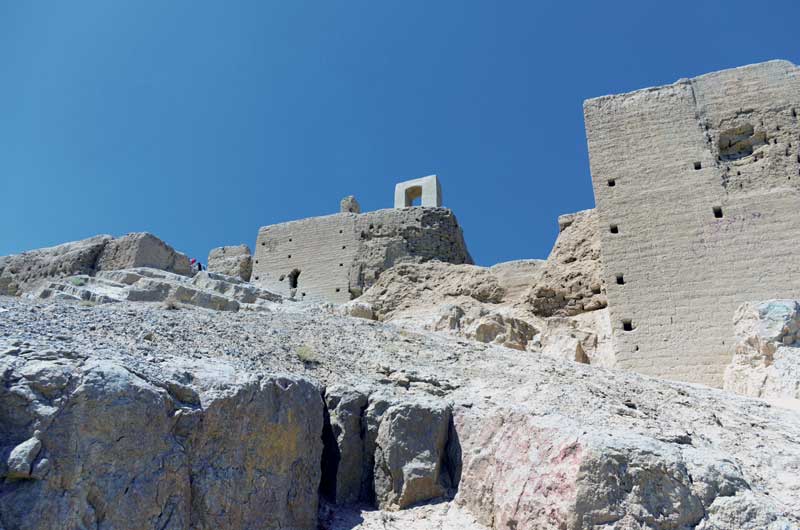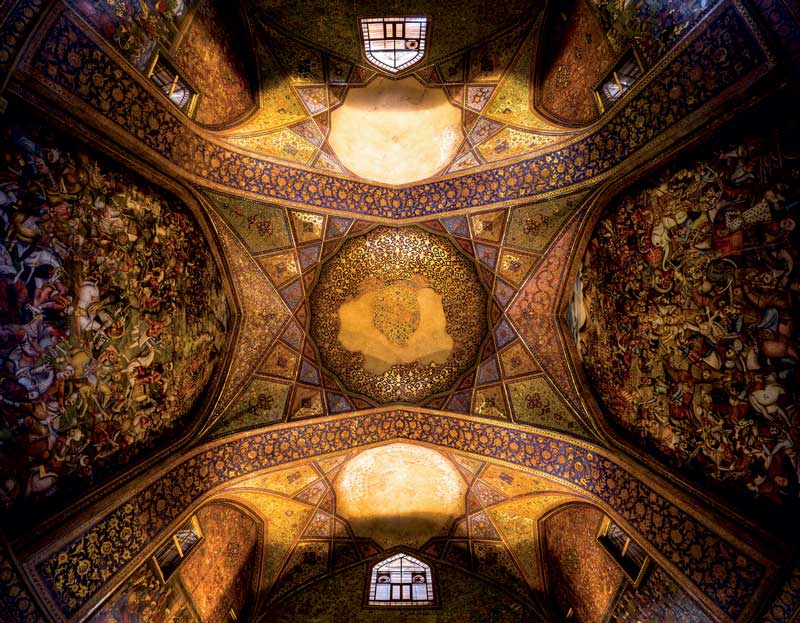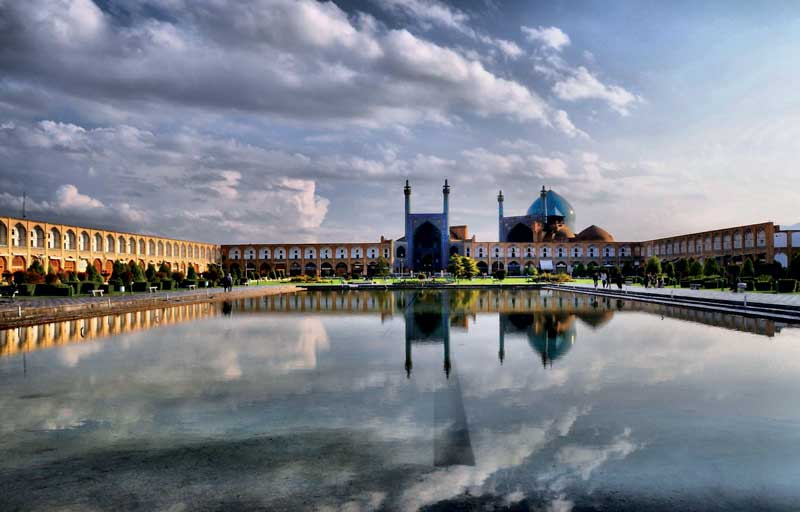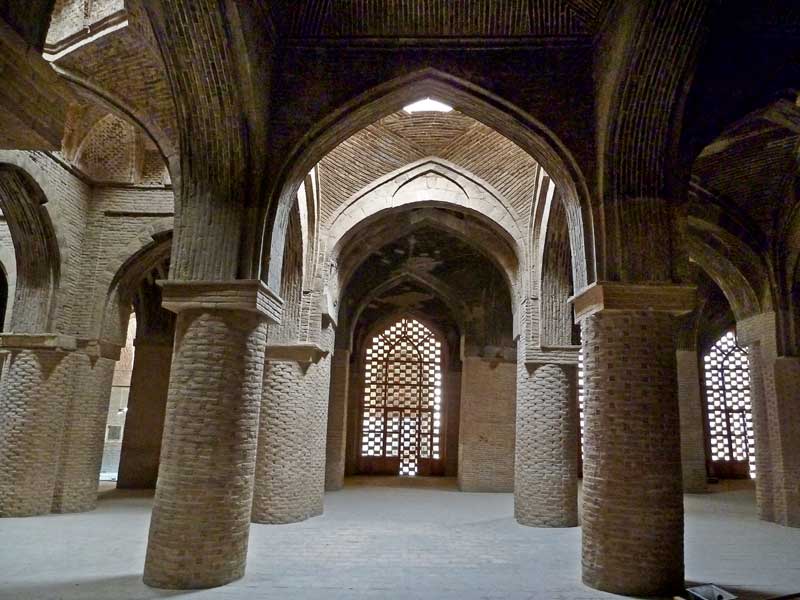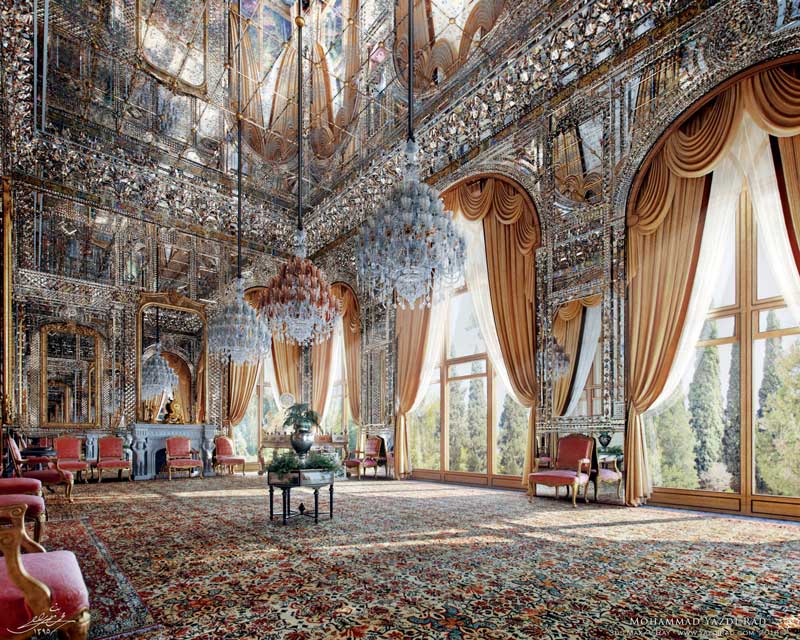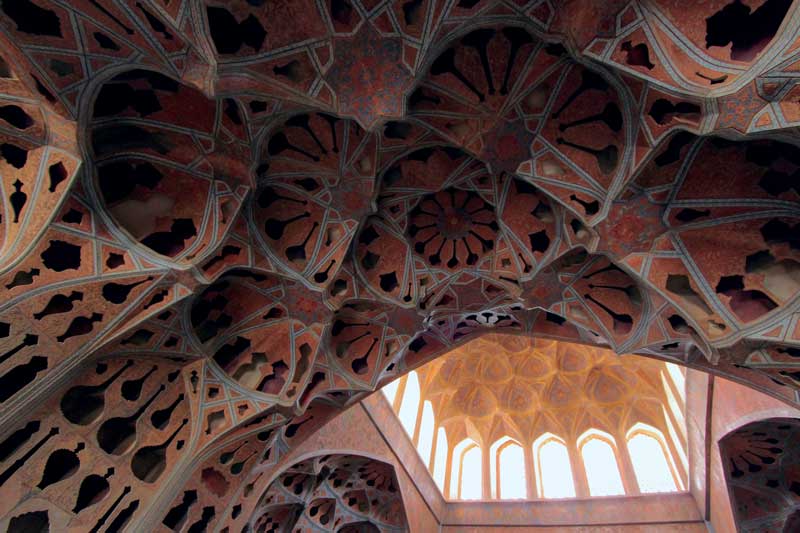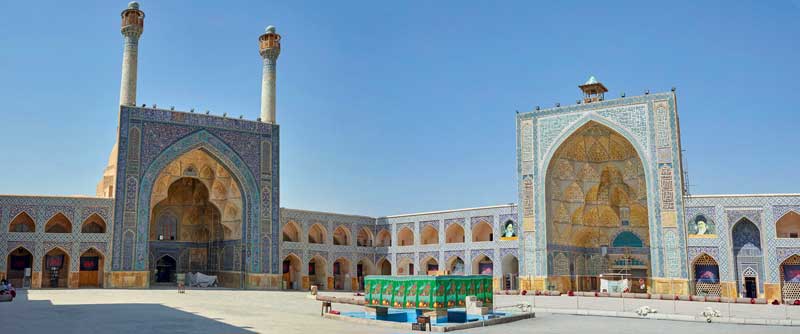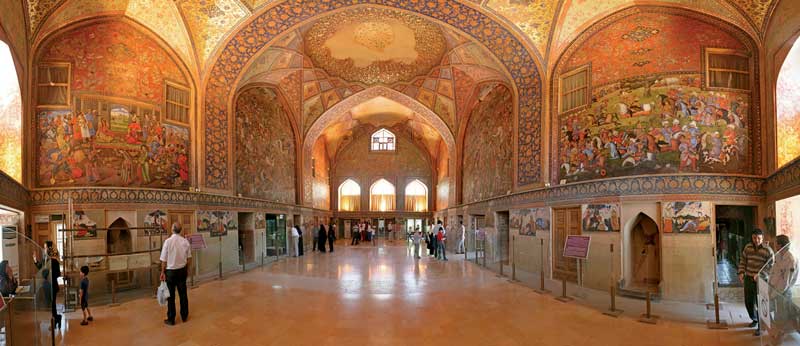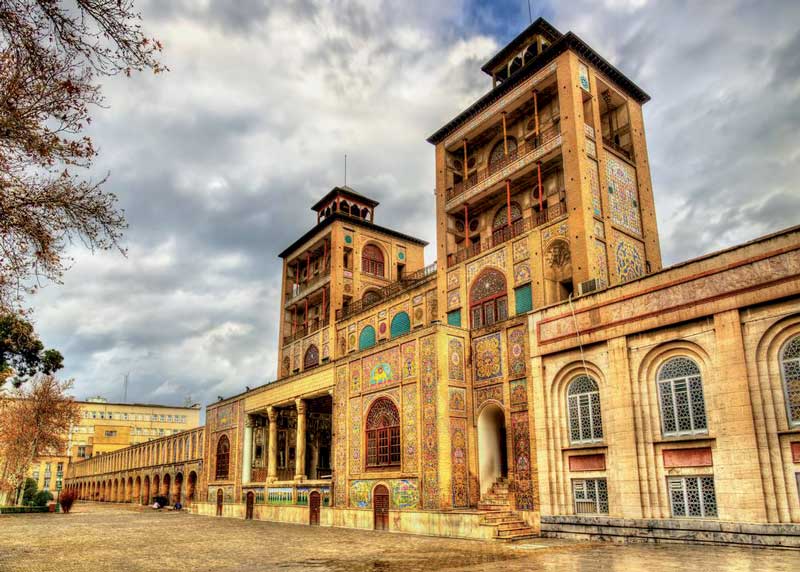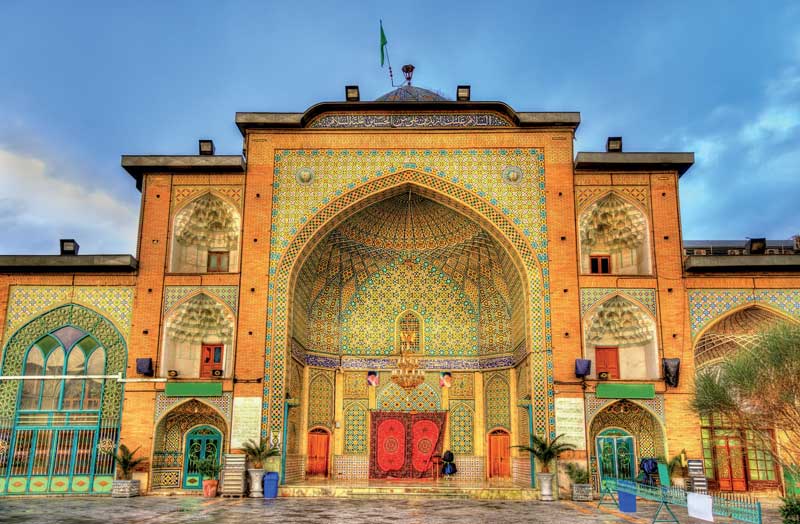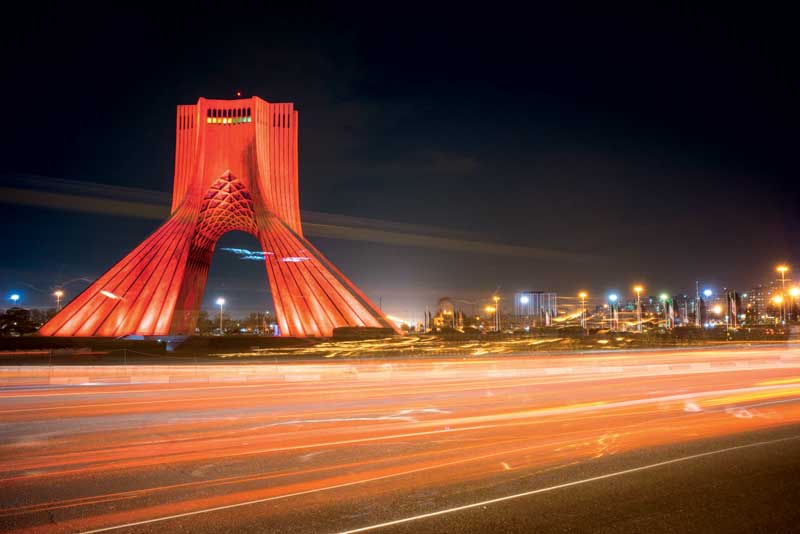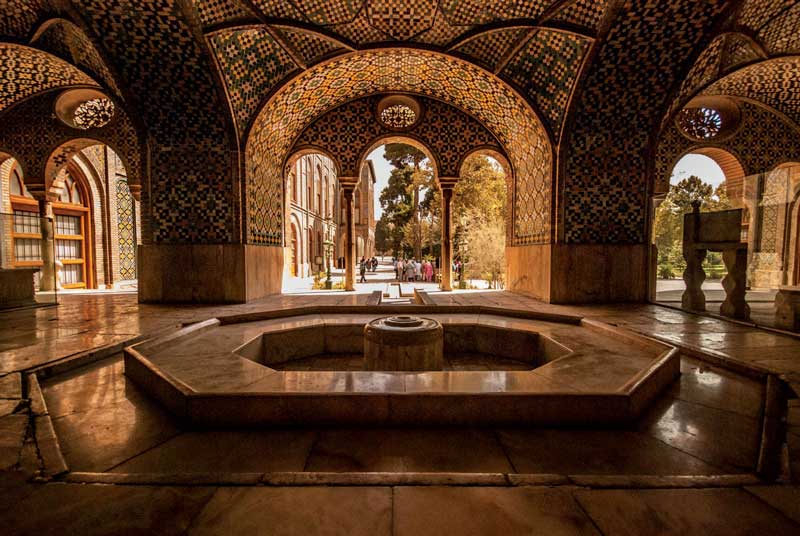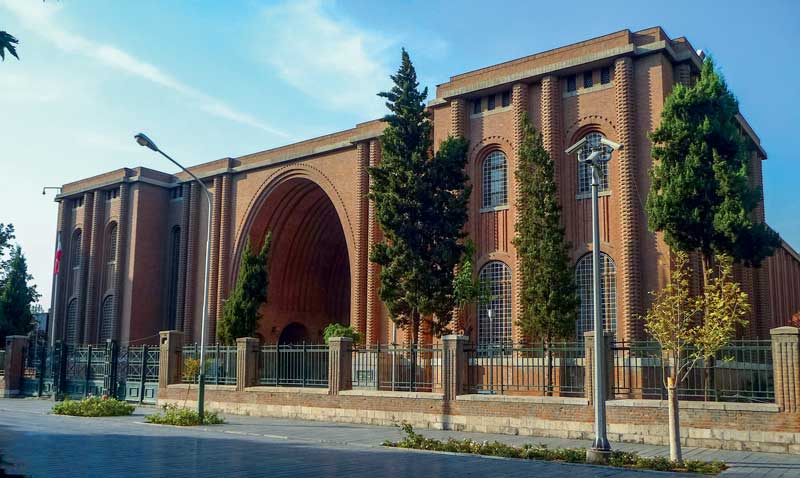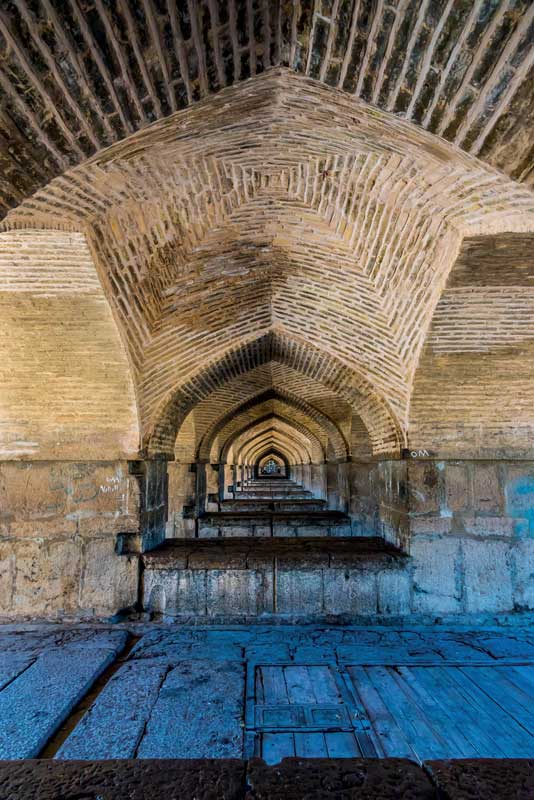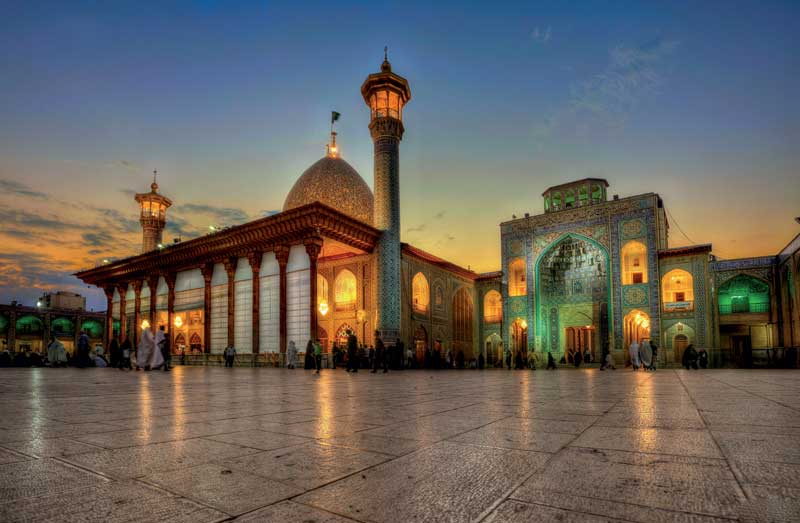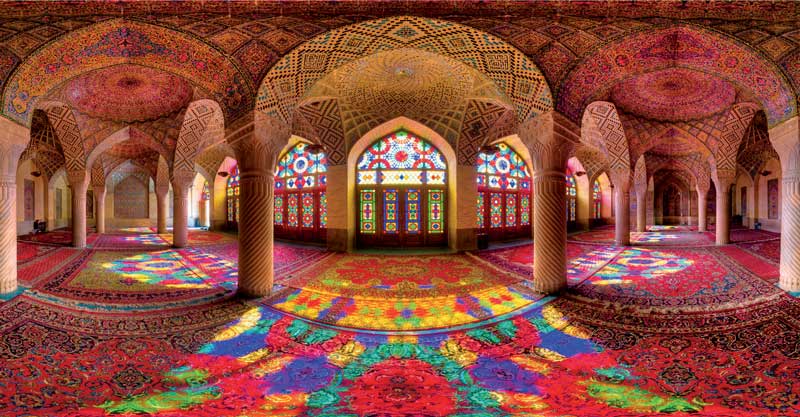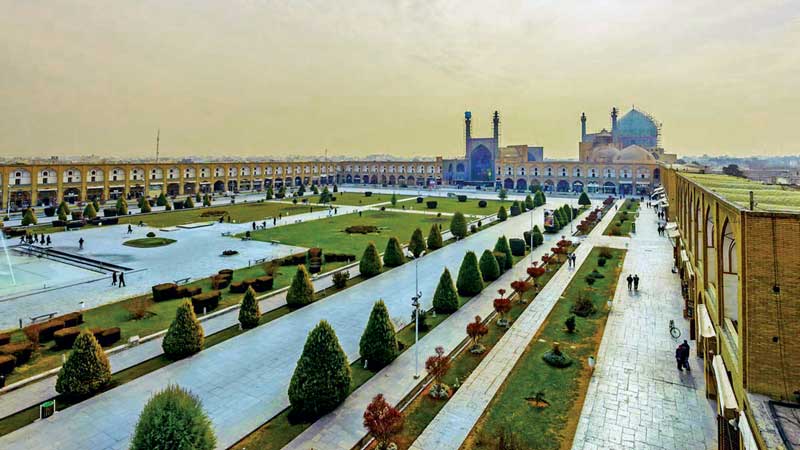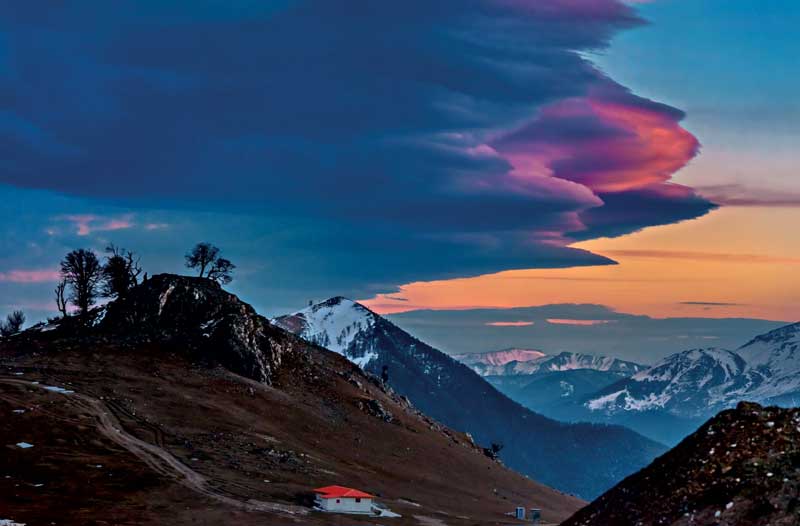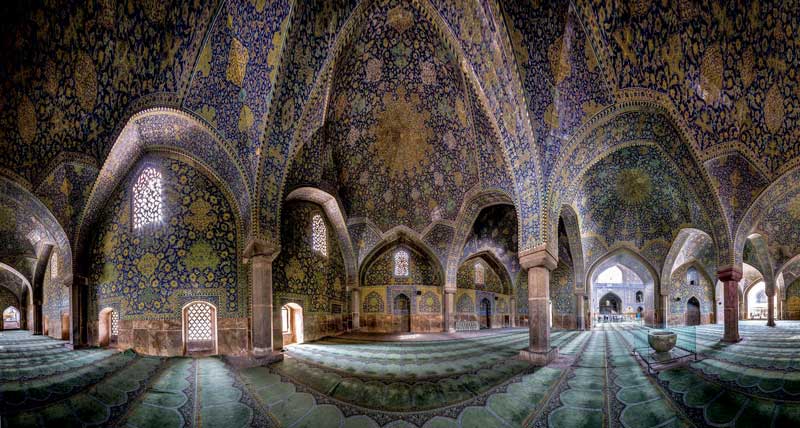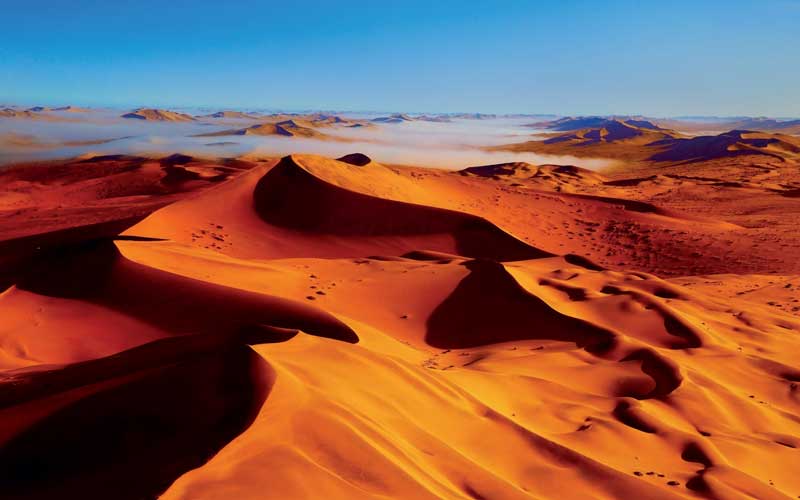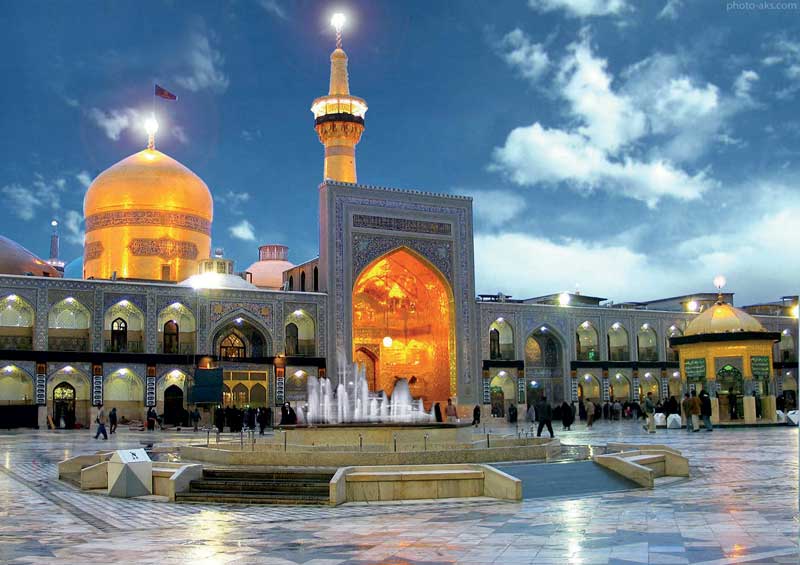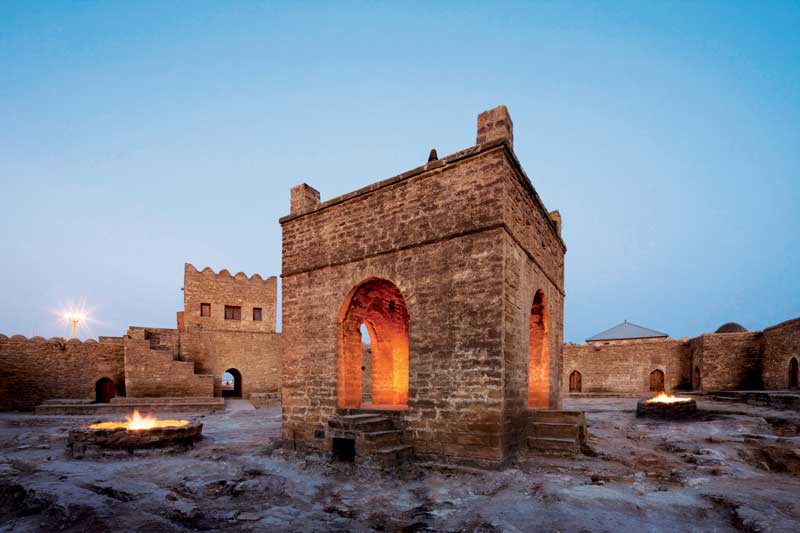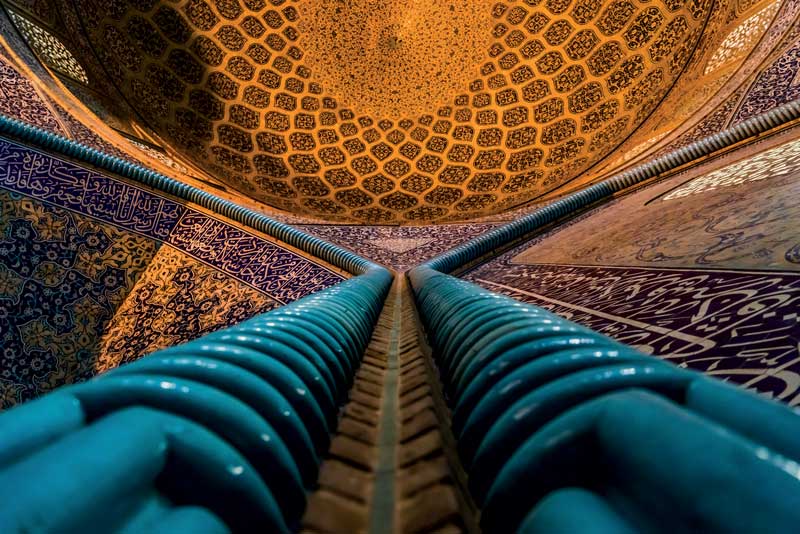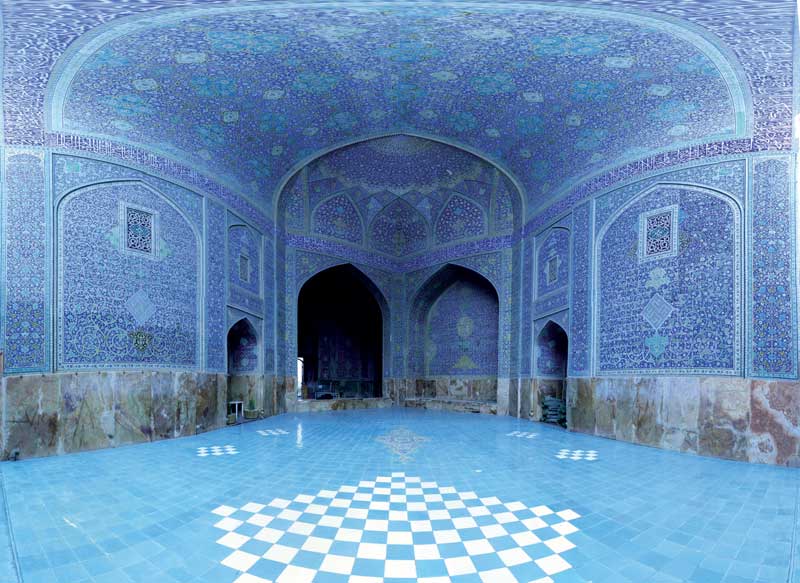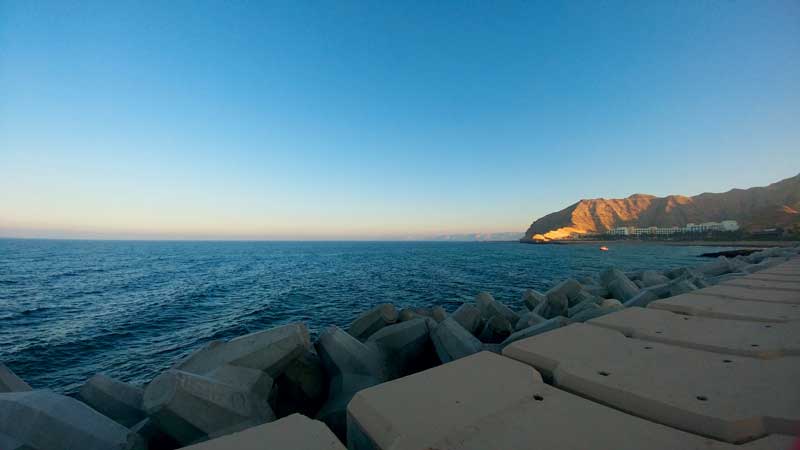There are countless misconceptions about what Iran is as a country. Most of what people around the world see from Iran is consequence of the way in which Western media and politics portray it and the prejudice this has garnered against Islam. Everyone who’s ever visited Iran, and met its people, who now represent what once was the Persian Empire, will agree on one thing: Iran is nothing like they thought it was going to be. Let’s take a closer look to this ancient nation that has remained secret from the outside world, but that it is eager to welcome everyone into its sacred land. But where can we begin to describe a nation so full of history, culture and natural diversity? Unpredictable, mysterious, conservative, ancestral, and deeply religious are only a few of its traits that we can observe at first glance; delving further will reveal so much more.
We find Iran in West Asia, surrounded by the Caspian Sea to the North, the Persian Gulf to the southwest and the Gulf of Oman to the southeast; the latter two are separated by the Strait of Hormuz—a waterway of great importance for shipping and trade. Iran is also bordered by the Alborz Mountains in the north and the Zagros Mountains in the west. The country’s main deserts are Dasht-e Kavir (Great Salt desert) and Dasht-e-Lut (Sand and Stone Desert)—regarded as Outstanding Universal Value by UNESCO—, both known for their extreme low and high temperatures that make their beautiful, yet mortally dangerous, sand dunes inhospitable all-year round.
One of the Oldest Civilizations in History
Iran’s history goes far back to several millennia ago, but the earliest Neolithic period hasn’t been properly studied as to determine the origin of human presence in these regions. The Proto-Elamite period, between 3400 BC and 2500 BC, is considered the oldest civilization in Iran, followed by Elam (2500 - 644 BC), “The Land of Gods”, which showed greater advances than those in China, Phoenicia and Greece at the time. Thereon, dynasties ruled over Persia through the ages; empires rose and fell. The Median Empire (728 - 550 BC) was spearheaded by Deioces, whose son, Phraortes, defeated the Assyrians. Cyrus the Great led an expedition to conquer the known world, while the Hellenistic Period (323 - 141 BC) brought Alexander the Great to conquer Persia; legend says he allowed his troops to loot Persepolis in revenge for Xerxes I burning the Acropolis of Athens, only to express remorse as the city burned. Mithradates I bears the title of founder of the great Parthian Empire (247 BC - 224 AD), which saw great technological and economical advances. Afterwards, the Sassanid Empire (224 - 651 AD) took over Iran when the Parthian Empire fell, and it was during the rule of Shapur the Great that Zoroastrianism rose and became the chosen religion. Persia was then conquered by the Muslim Arabs in the 600s, and Islam was introduced to the people. Later on, between 1219 and 1353, the Mongols occupied Persia, and were responsible for devastating loss and destruction. The Pahlavi Dynasty was the last one before they were overthrown by the Islamic Revolution in the late 1970s. Dynasty after dynasty and conflict after conflict, this nation still stands.
Nowadays, Iran has witnessed disturbance and further political instability. The war with Iraq in the 80s and the controversy, particularly with the United States, caused by Iran’s nuclear program, has shed negative light on this country. But the true essence of the Iranian culture, with its magnanimous Persian history, high values and deep respect is found in its people, their customs, their beliefs, their approach to life, and also the cities’ architecture, art and landmarks that represent the past, building the future of Iran for new generations.
The Architectural Wonders of Isfahan
Isfahan is the most stunning city of Iran—a jewel to be discovered. To say that the city of Isfahan is special and eternal is to be humble; Isfahan is so much more. It stood as the capital of Persia twice and it proudly preserves the shadow of former glory with its famous architecture, treasures, gardens and bazaars.
The Naqsh-e-Jahan square, one of Iran’s many UNESCO World Heritage sites, is considered one of the most beautiful and largest squares in the world—a 89,600sqm monument of Islamic architecture. The imposing square, which name means “Image of the World”, is home to the colorful Imam Mosque, built in 1612 and regarded as a masterpiece. Mosques are sacred places of prayer and worship, and as such, there is something holy in the way these structures were designed and built—meticulous tile work, carved stone, precious stones and masterful artistry are all embedded in every inch of these buildings, and Isfahan is home to 163 of them.
The Sheikh Lotfollah Mosque, located on the Eastern side of the square, just by the Isfahan Grand Bazaar, boasts some of the best mosaics in the whole of Iran, with intricate patterns and perfectly proportioned dimensions. Also in the square, Kakh-e Ali Qapu was built as a residence for Shah Abbas I, the sixth king of the Safavid dynasty. The palace is 37m tall and has a magnificent terrace that offers incredible views over the Iranian landscape. Across the Grand Bazaar, a recommended experience in itself, we find the Masjed-e Jâmé (Friday mosque), the oldest preserved building in Iran. It represents the evolution in mosque construction since the 8th century, during the Umayyad dynasty, when the four-iwan (a rectangular hall) architecture style emerged and was adopted in the region.
Also a UNESCO World Heritage site, the Chehel Sotoun Palace was commissioned for Shah Abbas II, the seventh Safavid king, and was used for official purposes and to entertain his guests. The palace harbors frescoes and ceramics that depict historical events; many other pieces are now exhibited in museums.
Another piece of incredible architecture is the Monar Jonban, a notable monument built in the 14th century. Its famous minarets, which rise high above the main structure, are beautifully decorated and carefully designed to sway freely with the wind. The Vank Cathedral, on the other hand, a rare display of Christian-Armenian architecture (with inevitable Islamic design) in Iran, was built in the 17th century during the Ottoman War. Bridges over the Zayandeh River also represent incredible sights to behold. The Khaju Bridge is one such example. Built in the mid-1600s, it’s the oldest bridge in Isfahan. The bridge is four-stories tall, 105 m long and has 23 arches.
The Virtues of Tehran
Tehran is the capital city of Iran, owner of its own wonders, and though it isn’t known as the most beautiful city of Iran, it has so much to offer as the hub of modern Iranian culture—the true pumping heart of the country. The Grand Bazaar in Tehran is a unique experience, where you can delve in its labyrinthine passages to find everything you can think of: restaurants, jewelry shops, traditional carpets, clothing, gold, fruits and vegetables, bags, souvenirs, accessories, pottery, and much more. You will find that Tehran is a crowded city, the traffic is usually dense and chaotic, and the smog is visible in the sky above, but there are many sites that will make your visit to the busiest city in the country worthwhile.
Golestan Palace is a majestic place which comprises 17 structures from the Qajar era that incorporate aspects of Persian architecture with western influences, recognized as World Heritage by the UNESCO. A visit to this site will take you on a journey of nostalgic wealth and opulence. Many buildings have turned into museums where you can learn about the history of the palace.
A famous landmark for Tehran is the Azadi Tower (Borj-e Azadi), a monument built in 1971 to honor the 2,500th anniversary of the Persian Empire. Azadi means ‘freedom’, and it became the tower’s name after the Iranian Revolution. The tower rises 50m in the middle of the scenic square, and you can go to the top either through a staircase or an elevator, plus your admission ticket includes a visit to the underground museum. Don’t miss it!
Other museums worth visiting are the National Museum of Iran and the Treasury of National Jewels. The National Museum, open since 1837, houses several collections of archeological, Islamic and Persian treasures, around 300,000 of them. Collections include prehistoric pottery and tools dating from before 1,000BC, sculptures, engravings, texts that range from works by poets like Nezami Sadi and Hafez to holy scriptures, glassware, carpets, textiles and more from the traditional Persian-Iranian arts and crafts. The Treasury of National Jewels, on the other hand, is where gems, diamonds, emeralds and overall the most precious stones once owned or worn by the ancient Persian dynasties are kept, and you can look at them on display if you visit the Central Bank of the Islamic Republic of Iran.
A stroll through the award-winning Tabi'at Bridge (‘Nature’ in Persian) will introduce you to the future of Iran. The bridge was designed to connect multiple points, with two public parks at each end: Abo Atash Park and Taleghani Park. The goal was to provide pedestrians with the opportunity to engage with a modern and unified urban setting that offers breathtaking views of the mountains and the city below.
For a getaway to the lush nature, you can visit the Alborz Mountains. You will find great trekking opportunities in the warmer seasons and perfect skiing conditions in the winter. You can explore the nearby villages, meet the locals and taste some delicious Iranian dishes. The mountains offer different kinds of accommodation depending on the type of adventure you wish to experience. The main attractions are the Castles of the Assasins: Alamut, Lambsar and Rudkhan are the most famous ones. Former fortresses and now spectacular ruins, each castle has its own history of war and legend that has inspired many contemporary tales, and you can visit them on a two or three day hiking trip.
Shiraz: The Jewel of Iran
Shiraz is one of the most enthralling cities of Iran; perhaps the most romantic, home of poets and colorful gardens. Now it’s the capital of the Fars Province and one of the most sought-after locations for tourists. Because the city is located in the southern region of Iran, its fertile lands use to be prolific wine producers, but since alcohol is prohibited in Iran, we can only appreciate the legacy it left behind.
"Bendita sea Shiraz en su estado incomparable / Que Dios Todopoderoso la proteja contra su deceso"
– Hafez
Stunning architecture isn’t anything new in Iran. The country’s traditions are deeply rooted in Islam; prayers and worship are an important part of daily life. This is why mosques are so important across the territory, for locals and foreigners alike. You can find them in various representations that have evolved throughout the centuries. Iran’s most famous one is arguably the Pink Mosque (Nasir al-Mulk), completed in 1888 after 12 years of construction. A visit to Nasir al-Mulk at sunrise will become one of the most stunning sights you’ll ever witness. The courtyard, the museum and the art gallery will complement your visit. Another spectacular sacred site is the Shah-e-Cheragh Holy Shrine, with sparkling interior walls covered with glass and multicolor tiles. Shah-e-Cheragh is a funerary monument that harbors the tombs of the sons of Müsã al-Kãdhim, the seventh Shiite Imam—simply an experience you can’t miss.
Poet Hafez is highly regarded with pride and respect in Persian culture. A visit to Shiraz must include a stroll through the gardens of the Tomb of Hafez, where you can read bits of his poetry engraved all around the site. Shiraz is also the ideal place to visit Persian gardens. Aromatic, captivating and colorful, the Eram Garden is purely Persian, located by the Khoshk River. The etymology of the word eram comes from iram, which means “heaven” according to the Quran, and of course, the garden is like a small piece of heaven on earth. Just as heavenly, the Shapouri House, a historical mansion from the Pahlavid era, is considered a national monument. The structure was designed by Abolghasem Mohandesi a renowned architect from the early twentieth century. The site is perfect for relaxing in its café, exploring the beautiful 4,635 sqm garden, or visiting the art exhibition.
Karim Khan Arg is one of the most impressive monuments that the ancient city of Shiraz offers. The citadel dates back to the second half of the 18th century when the Zand Dynasty ruled in Iran. The structure was built as a fortress with ornamental brickwork, four towers—one of which is slightly leaning over—and used to be a prison for a while. Now you can visit its lovely Persian garden, artworks and learn about its history.
The Legacy of Persepolis
The core of Iranian identity is grounded in the mighty Persian Empire. Persepolis is a symbol of past glory, Achaemenid culture, economic and political prowess. Built around 515 years before the Common Era, the city of Persepolis witnessed the rise and fall of the empire that Cyrus the Great founded. The city fell at the hand of Alexander, not the Great, but the Destroyer, as he is known in Iran. Looted and burned to the ground, the ruins now stand as a reminder of its grandiosity and Iranian pride. You can visit the archeological site and see the magnificence of the Grand Staircase, the Gate of All Nations, the Tachara and Hadish Palaces, the Throne hall, along with the bas relief work on the walls and columns. Many tourists make the trip to Iran just to visit Persepolis and you can’t miss the opportunity to see the vestiges of the former empire.
Yazd: The Desert City You Will Never Forget
Yazd, located in the heart of Iran and surrounded by sand dunes, is a place that will allow you to travel back in time. You can see the evolution of the city coexisting with the distinctively Persian structures, built mostly in adobe, that have stayed unchanged for millennia.
This is also the place where you can experience the deserts of Iran. It’s considered one of the oldest cities in the country, and it used to be a prominent leader in Zoroastrianism for centuries before Islam was imposed following the Arab conquest. Ateshkadeh is the only fire temple that houses the Atash Bahram (Victorious Fire)—legend says the fire inside has been burning since 470BC, and though at first glance it isn’t a place that stands out compared to other architectonic wonders, it’s worth a visit if you want to learn more about one of the world’s oldest religions.
The Amir Chakhmaq Complex, on the other hand, is a place you absolutely must visit if you find your way to the city of Yazd. Amir Chakhmaq is a stunning sight at night, when the sky is dark and the illumination in the alcoves lights up the whole structure. It was built in the 15th century during the Safavid dynasty, and it has undergone many renovations; the original façade still stands. You should also visit the Jãmeh Mosque of Yazd; it’s a beautiful display of tile work, inscriptions and calligraphy, with two 48m-high minarets flanking the portal (visible from outside the city), a courtyard and the exquisite dome that has become a landmark for Yazd. Inside, you will find visitors paying respect with prayers and a small museum.
Many travelers agree that, when in Yazd, watching the sunset on the rooftops is an experience you will never forget. You can find a rooftop café, a restaurant, or a welcoming hotel with a rooftop lounge, or simply have a friendly local invite you over to see the enthralling view. Yadz will captivate you in many ways and stay with you after you get lost in the narrow streets and passageways, as you experience the old Iran with its traditional personality and become part of its rich history.
The Unlikely Tropical Destination
After the beautiful gardens of Shiraz, the urban atmosphere in Tehran with the mountain range in the background, the stunning architecture of Isfahan and the magnificent deserts of Yazd, some might think there isn’t much left to see in Iran, but you only have to go a bit south to enjoy the tropical side of this diverse country.
Kish became a thriving resort island in the 1970s, when new tourist developments turned the beaches into one of the hottest destinations for travelers looking for luxury, white sand beaches and comfort. Kish, unlike mainland Iran, doesn’t require an entry visa for a 14-day stay. Famous for the quality of its pearls, this island is located northeast of the Persian Gulf, at 17km from the rest of Iran. The history of the island can be traced back about 3,000 years. It used to be a crucial port for trade because of its strategic location. Now it enjoys free-trade status and a more relaxed atmosphere.
Kish has some of the best spots to practice your diving skills in places like Marjan Beach; you can also explore the coast and appreciate the marine life. Corals are extremely important for the ecosystem and attract countless fish species that you can observe while swimming offshore. You can visit the local aquarium or the dolphin park and go on a biking trip along the picturesque roads across the island. You can also visit the archeological site of Harireh City (or the Kariz Underground City) to explore the ancient tunnels. Qeshm, Hendorabi and Hormoz islands, though more traditional and less luxurious than Kish, also offer great opportunities for tourists that include fishing, diving, sailing, pristine beaches, as well as tea houses, historical sites and more.
Overall, Iran is a country that hides many virtues. We can get lost in the Persian culture, its history, its natural diversity and its astounding architecture, and still never fully appreciate what Iran really is. Visiting Iran is always a pleasant surprise—one that must be at the top of your bucket list and one that you will carry in your memory forever.
Text: Donovan White ± Foto: Imam square / Qashqai / Untold Persia / ran travel guide / WOF / © All Rights Reserved. Land of Turquoise Domes Tour and Travel Company / wpfd / kivt decor / Wikipedia / Imguar /Katharina / G Architect / Speak Seazy / Feng Wei / Victorillen / Wikimedia / Wikipedia / Feng Wei / Dario Monelli / Surfiran / Dreamstime / Kanet2d / Wikipeida / Static Uglu Edge / Iran Tourism / ONT / Azis Nasuti / Majestic adventure / IIMT INS / © All Rights Reserved. Land of Turquoise Domes Tour and Travel Company / Shia Followers / Speak zeasy / Iran travel guide / Wikipedia / Pexel

